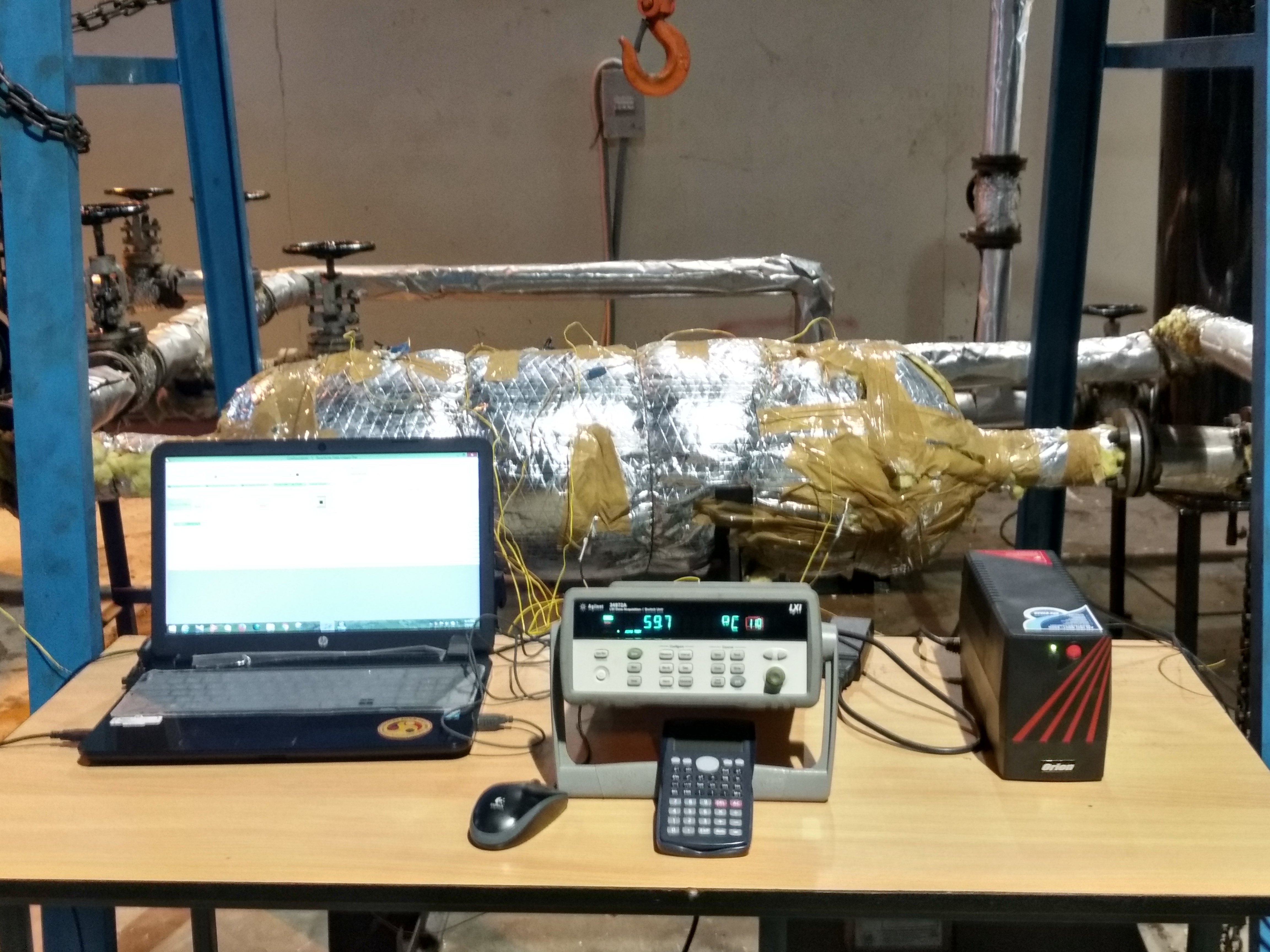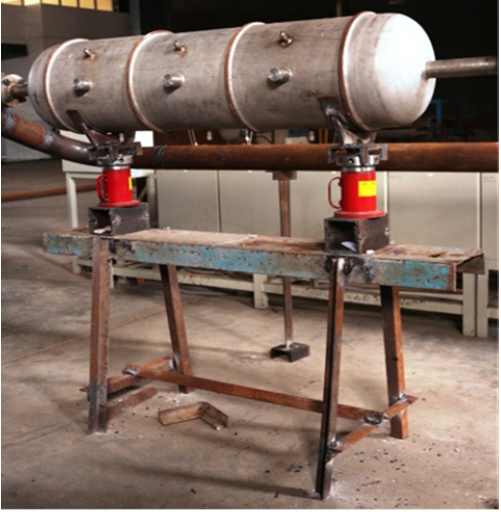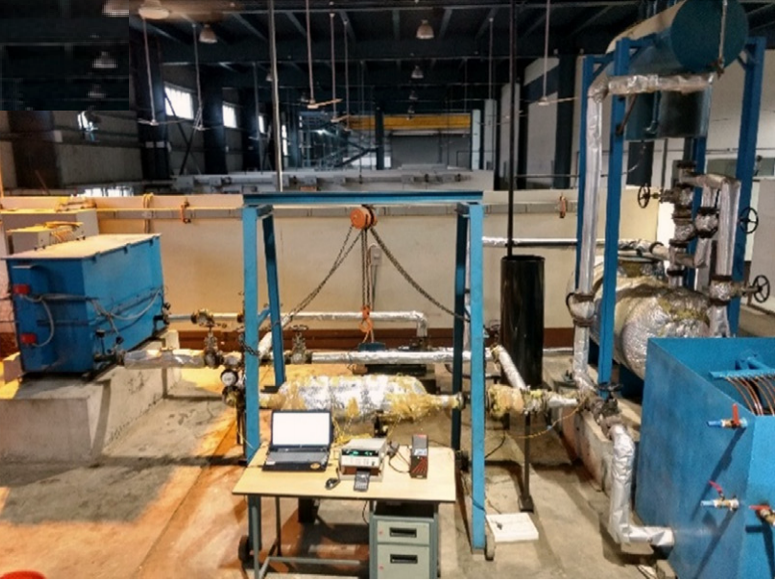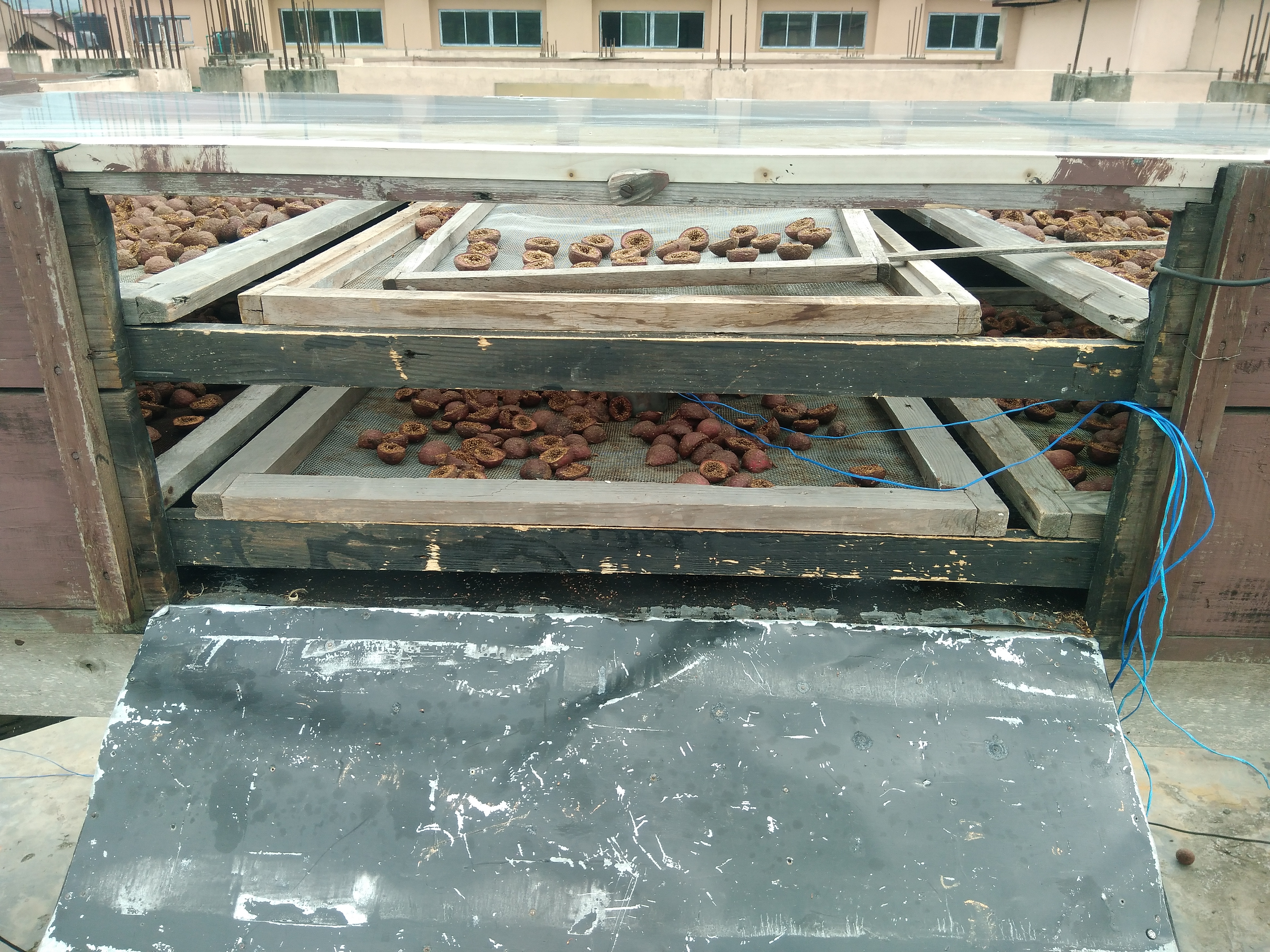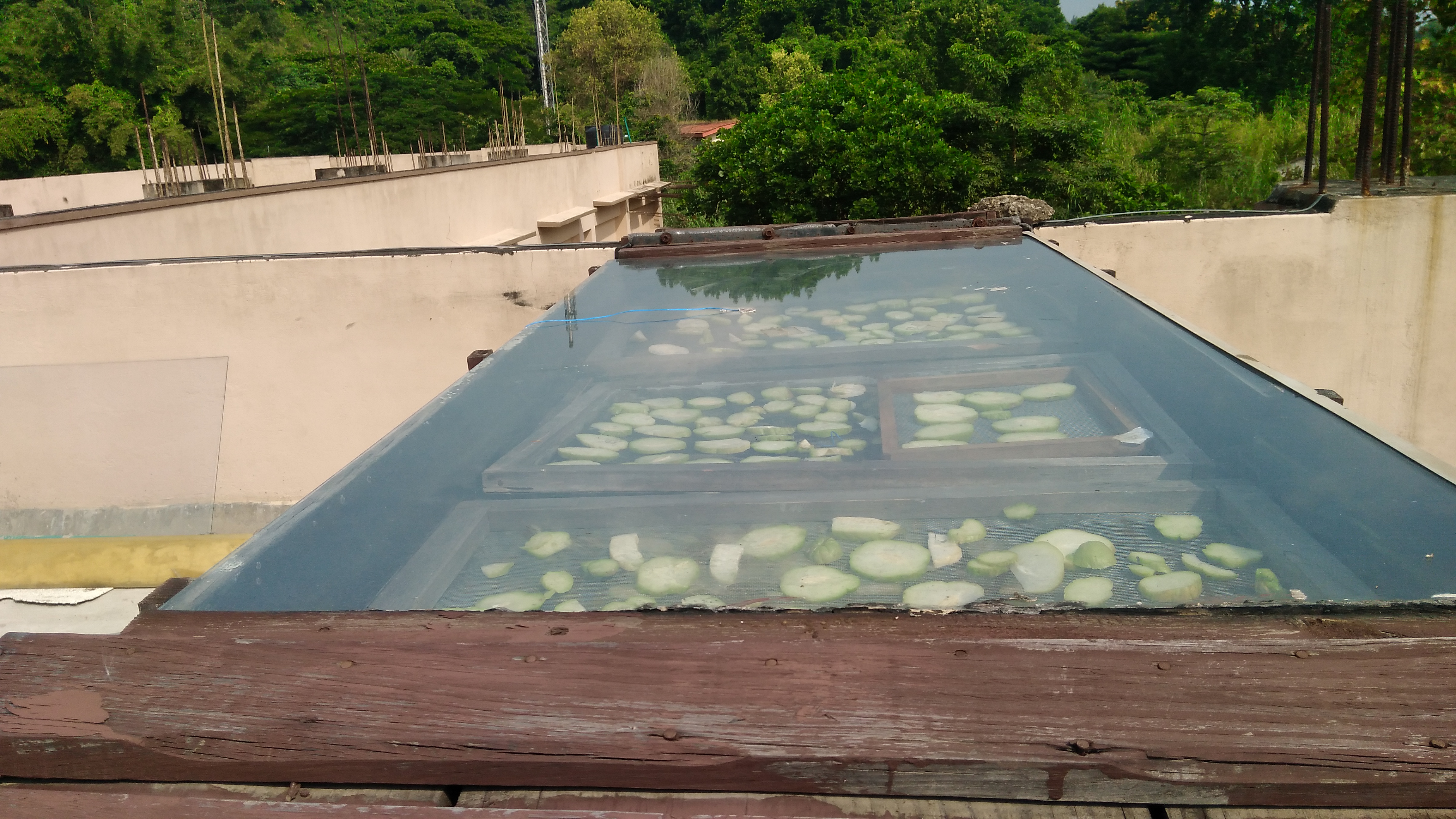
Experimental setup for testing energy storage models
up to 400 °C

Experimental setup for testing energy storage models
up to 200 °C

Schematic of Solar Dryer
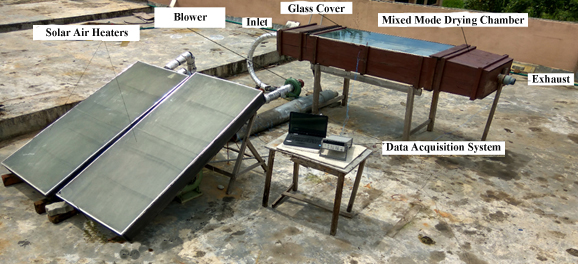
Solar Dryer Experimental Set up developed at IIT
Guwahati
Previous
Next
Thermal Energy Storage
Thermal energy storage system (TESS)provides a great means to correct
the mismatch between the energy supply and demand. During on sun
hours, the excess thermal energy available is stored in TESS and the
stored energy is retrieved for producing electricity during off-sun
hours. The application of such systems range from low temperature
cooling systems to high temperature CSP technology.Thermal energy can
be stored in three different ways, viz., Sensible Heat Storage (SHS),
Latent Heat Storage (LHS) and Thermochemical Energy Storage (TCES).
In SHS system, thermal energy is stored in the storage material by
raising thetemperature. SHS utilizes the heat capacity of the storage
material to store the thermal energy. Materials such as Molten salt,
oil, rock, concrete, cast steel, etc. are used in SHS system.In LHS,
thermal energy is stored in the materials during the phase changeof
the material at a constant or near constant temperature.Salt hydrates,
Metals, Eutectics, Paraffin’s, etc. are employed as PCMs.
Our research team at IIT Guwahati possess a long-term experience
(past 10 years) in thermal modelling and testing of sensible and
latent heat thermal energy storage systems.
Focus:
- Development of thermal model for predicting the charging and
discharging characteristics of TESS (for both SHS and LHS)
- Design of heat exchanger that gives better heat transfer rate
- Experimentation of the energy storage models to evaluate actual
performance.
- Cyclic tests of the storage materials
An experimental setup was developed for testing lab scale storage
models. A synthetic thermic oil (Hi–Tech Therm 60) is used as heat
transfer fluid in this experimental setup. Both SHS and LHS models
were tested using this experimental setup. SHS materials such as
Concrete and Cast steel were tested on 10 MJ scale. Also, a 12 MJ LHS
model was developed using a ternary mixture comprising of potassium
nitrate, sodium nitrate and sodium nitrite in theweight proportion of
53:7:40, which has the melting point of approximately 142 °C.
Due to an increased interest in the field of renewable energy
particularly in solar energy, numerous thermal energy storage
materials have been identified and developed during the past few
years.Even though the improvements in terms of storage techniques are
remarkable, there is a need to develop a TESS that operates over 300
°C to make concentrating solar power technology cost competitive. The
current research at IIT Guwahati is aimed at developing and testing of
high temperature sensible, latent and thermochemical energy storage
models that operate over 300 °C. Anexperimental setup is developed
(shown in Fig. 2.) at IIT Guwahati for testing SHS and LHS models at
higher temperatures.
Thermochemical Energy Storage (TCES)
System:
Thermochemical heat storage (THS) systems rely on the energy absorbed
and released in
breaking and reforming molecular bonds of certain materials in a
completely reversible
chemical reaction. The utilisation of TCES materials offers a compact,
efficient and economic TESS. These systems provide higher energy
density, higher exergy efficiency and long term storage. At present,
our research team is focused on identifying potential TCES materials
and development of thermal model for predicting energy storage and
discharge characteristics. In future, characterization of the
potential TCES materials and preliminary experimental studies on lab
scale prototypes will be conducted.Hydroxides, carbonates and metal
hydrides are in major consideration.
Gallery
Modeling multi-tube heat exchanger
models
Storage module connected to a
charging/discharging cycle with temperature data
monitoring
Typical heat exchanger for
Cascaded TESS: 12 MJ capacity
Experimental setup for testing
energy storage models up to 200 °C
Natural Convection Phenomenon in
charging process of a storage system
Previous
Next
Solar Dryer
Solar dryers are devices that use solar energy or
radiation to dry substances, especially agricultural
products in order to preserve it. The solar dryer haveabsorbing
surface which absorb solar radiation and gain heat from
it.The heat energy is used to remove the moisture content from the
products, hence it dries up the product. There are three general
types of solar dryers: Direct, Indirect and Mixed mode.
Direct type solar dryer
Direct solar dryers expose the substance to be dehydrated in
direct sunlight. Here the product directly gain the heat
from sunlight and get dried. In this case there can be chances for
contamination of product by dust from wind, by birds, insects, or
animals.
Indirect mode solar dryer
In case of indirect type of solar dryer, air is heated separately
by using solar air heater and the hot dry (low % of Relative
Humidity) air is pass to the dryer chamber, where the product is
placed for drying. Here direct sunlight is not allowed to fall on
the product as,direct sun can chemically alter the contents of the
products and making them less appetizing.
Mixed mode solar dryer
In mixed mode dryer the solar radiation is allow to enter the
drying chamber to heat up the product inside the dryer and hot air
is also supplied to the drying chamber from separately connected
solar air heater. In this case the dryer receives heat from both
solar radiation and hot air, due to which the drying rate is faster
in mixed mode dryer.
The solar thermal lab at IIT Guwahati mainly focusses on the
following –
- Numerical and Experimental Studies to find the Drying Kinetics
of different products in all the three types of solar dryer.
- Trying to find out the optimum drying kinetics rate by varying
the air flow rates and incorporating PCM type thermal storage.
- Sampling of the dried product to find the best drying condition
for good quality of dried products.
Gallery
Trays for keeping products
Product exposed to direct solar
radiation
Solar dryer experimental setup
model
Actual experimental setup
developed at IIT guwahati
Previous
Next

